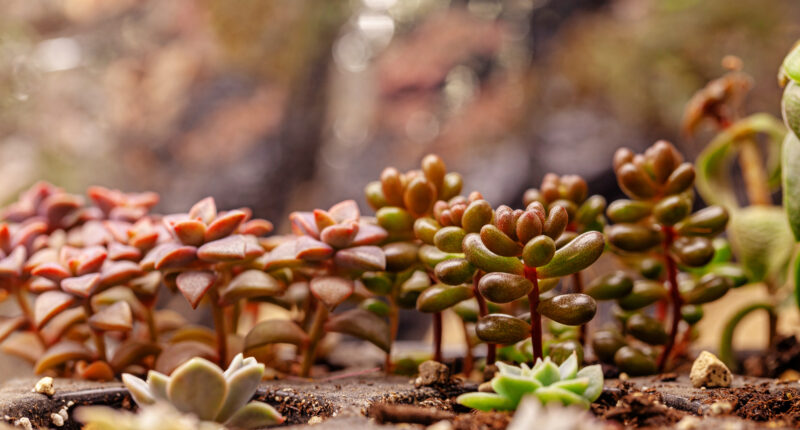Succulents are native to various regions around the world, with many species originating from arid or semi-arid climates. They are found naturally in a wide range of habitats, including deserts, grasslands, rocky slopes, and coastal areas. Here are some common places where succulents grow:
Deserts: Succulents are well-adapted to arid desert environments and are often found growing in sandy or rocky soils with limited water availability. Examples of desert succulents include various species of cacti, Agave, and Euphorbia.
Grasslands: Some succulents are native to grassland habitats, where they grow alongside grasses and other vegetation. These succulents may have adaptations for surviving in habitats with seasonal rainfall patterns or periodic droughts.
Rocky Slopes: Succulents are often found growing on rocky slopes or cliffs, where they can take advantage of well-draining soil and protection from excessive moisture. Their ability to cling to rocky surfaces allows them to thrive in challenging environments.
Coastal Areas: Certain succulents are adapted to coastal habitats, where they can withstand salt spray, sandy soils, and fluctuating environmental conditions. Coastal succulents may include species such as Ice Plants (Delosperma) and coastal-dwelling Agaves.
Tropical Regions: While many succulents are associated with arid climates, some species are native to tropical regions with higher rainfall and humidity levels. These tropical succulents may grow in rainforests, cloud forests, or other humid habitats.
Mediterranean Climate Zones: Succulents thrive in Mediterranean climate zones characterized by mild, wet winters and hot, dry summers. Regions with Mediterranean climates, such as parts of California, South Africa, Chile, and Australia, are home to diverse populations of succulents.
Indoor Environments: In addition to their natural habitats, succulents are also popular as houseplants and can be grown indoors in containers, terrariums, or other decorative arrangements. Many succulent species are well-suited to indoor environments with bright, indirect sunlight and low humidity levels.
Overall, succulents are found in a wide range of habitats around the world, from deserts and grasslands to coastal areas and tropical forests. Their ability to adapt to diverse environmental conditions has allowed them to thrive in various ecosystems and make them popular choices for gardens, landscapes, and indoor décor.

Here's what you should do next...
I want to share with you more succulent care tips, growing secrets, and troubleshooting fixes to:
- Grow healthier, more vibrant succulents
- Keep your succulents happy indoors and out
- Revive your unhealthy succulents FAST
- Make your own succulent-specific potting soil
- Inspire tons of different DIY succulent projects
- Solve your most pressing succulent problems
- and TONS of succulent FAQ answers on the next page!
You will also discover over a HUNDRED surprising tips and tricks you can use daily to effortlessly transform your succulents into healthier, happier plants... click the button below to go to the next page to discover more succulent care tips, growing secrets, and troubleshooting fixes that will make your life 100x easier: